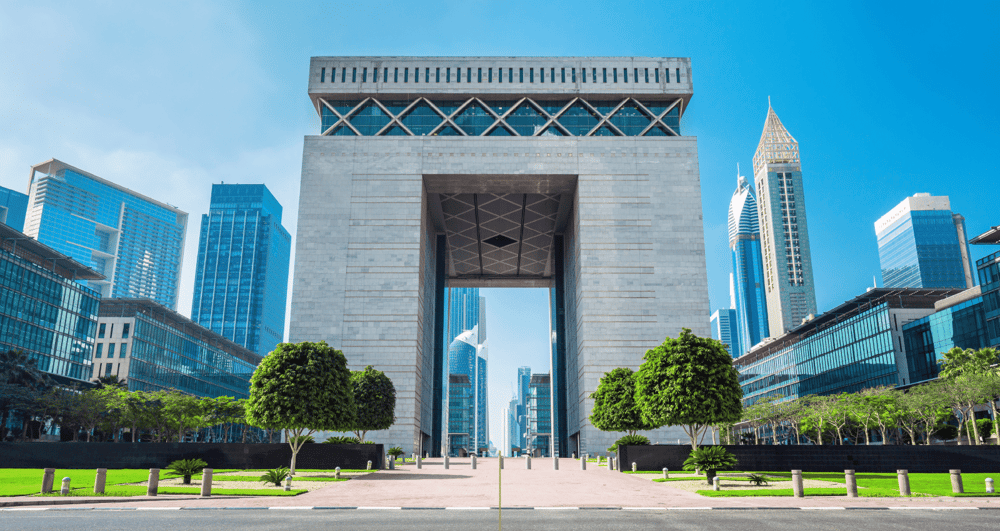How US Tariffs Could Reshape the UAE Real Estate Market in 2025
The geopolitical chessboard shifted yet again this April as the United States introduced sweeping new tariffs on global imports. President Trump, in an effort to bolster the American economy, announced a 10% baseline tariff on goods from nearly every country, sparking immediate volatility across international markets. Though a 90-day pause was later introduced for nations that did not retaliate with their own tariffs, the move nonetheless sent a clear message about the future of trade relations with the US. For global investors, particularly those with interests in the UAE real estate market, the question now is not if this will have an impact, but how.

A Global Trade Shake-Up with Local Implications
While global headlines have largely focused on diplomatic fallout and trade logistics, savvy investors are already looking to the next layer: real estate. The UAE economy, which thrives on global flows of capital, goods, and talent, the effects of US tariffs are unlikely to remain confined to the shipping yards. Rising costs for imported construction materials could pressure project margins and impact development timelines. Equally, shifting trade routes and corporate realignments may reshape demand across commercial, industrial, and residential sectors in ways both subtle and dramatic.
The immediate financial response within the Gulf was revealing. Regional stock markets took a hit in early April, reflecting investor concern over escalating trade tensions. Dubai’s main index slid by nearly 2% on the day of the announcement and opened 6% lower the following week, only seeing a partial recovery when talk of tariff negotiations surfaced. If only the perception of disruption to global trade can upend the Gulf’s real estate-heavy financial landscape, how will the market adapt when the real thing goes into effect?
Volatility Breeds Long-Term Opportunity
As is often the case with the UAE, short-term volatility may give way to long-term opportunity. The country’s position as a business and logistics hub positions it as a natural refuge for multinationals navigating the fallout from tariff-heavy policy. As firms recalibrate their operations to avoid friction with the US or to diversify supply chains away from Asia, the UAE’s real estate ecosystem stands to benefit in the form of heightened demand for office space, logistics hubs, and mid- to high-end residential communities.
The logistics and industrial segments are already primed for growth. Demand for warehousing, free zone space, and mixed-use industrial parks is expected to rise as companies adjust their global footprints to bypass tariff-heavy jurisdictions. This is especially true for businesses engaged in e-commerce, manufacturing, and re-export trade—sectors that have long leveraged the UAE’s geographic advantage at the crossroads of Asia, Europe, and Africa. Areas such as Jebel Ali Free Zone, Dubai South, and Abu Dhabi’s Khalifa Industrial Zone are likely to see increased activity, potentially lifting rental yields and encouraging further development in these corridors.
Developers, meanwhile, face a mixed outlook. On one hand, any increase in construction input costs due to pricier material imports could impact budgets and margins. On the other, developers in the UAE have historically shown a remarkable ability to adapt, whether by revisiting sourcing strategies, negotiating local alternatives, or adjusting project phasing to manage costs. The country’s robust logistics network and deep trade relationships with Asia, Africa, and Europe may also provide a degree of insulation from US-centric trade shocks. Developers with diversified supply chains and strong capital positions will be best placed to weather any temporary turbulence.
Alternative Growth Paths
Residential property may also experience subtle shifts in demand. As multinational companies consider relocating regional operations to more trade-resilient locations, the influx of senior executives, professionals, and support staff could stimulate demand for high-quality housing. Communities offering a blend of lifestyle, connectivity, and international schooling, such as Dubai Hills Estate, Tilal Al Ghaf, or Saadiyat Island, stand to gain from this trend. Moreover, emerging neighbourhoods with proximity to new economic zones may attract interest from both tenants and investors seeking long-term rental income.
Investor sentiment remains a critical factor in how these trends unfold. While equity market jitters are inevitable in the short term, the UAE’s reputation as a safe haven for capital remains intact. The peg between the dirham and the US dollar ensures currency stability, while the country’s tax-free environment continues to appeal to global high-net-worth individuals and institutional players alike. The property-linked visa schemes, recently expanded to include more flexible thresholds and longer durations, add further incentive for foreign investors to anchor their wealth in bricks and mortar.
Beyond these fundamentals, the UAE’s broader economic trajectory provides reassurance. The country’s commitment to infrastructure investment, economic diversification, and regulatory reform positions it well to adapt to shifting global currents. From AI-driven property services to clean energy developments and smart cities, the UAE’s real estate market is increasingly defined by innovation and resilience. It is a landscape where long-term value is being built not in spite of global uncertainty, but because of it.
That said, strategic caution is still warranted. Investors would do well to diversify their real estate exposure, not just by asset class but also by location and target demographic. Industrial and logistics properties in growth corridors may offer outsized returns, while residential units in master-planned communities with strong rental appeal could provide dependable yields. Developers, for their part, must remain agile and actively monitor supply chain costs while anticipating shifts in demand and maintaining transparency with investors and buyers.
While the latest round of US tariffs does add a fresh layer of complexity to the global investment landscape, it may ultimately reinforce the UAE’s value proposition: a stable, strategically located, and forward-looking destination for global capital.



